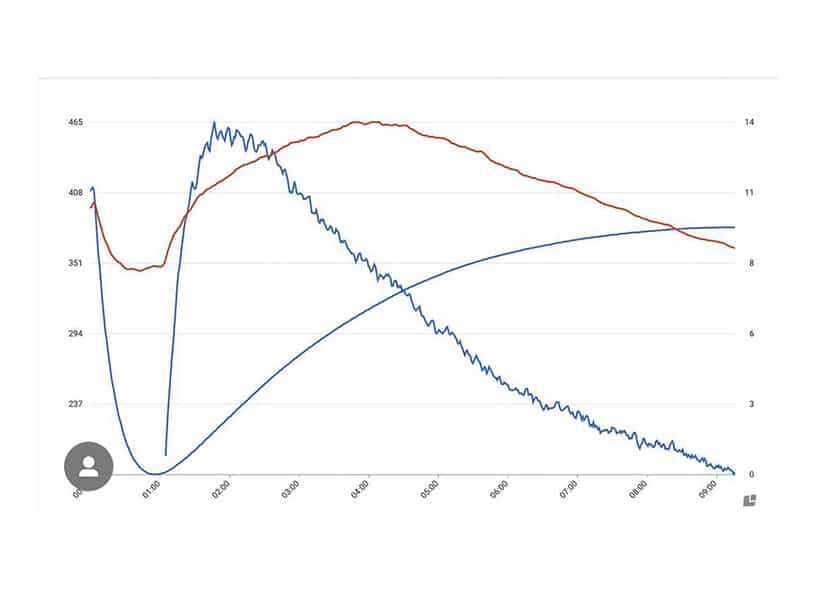
As a past owner of a coffee shop and roastery, I’ve know that there’s nothing quite like the aroma and flavor of freshly roasted coffee beans. If you’re new to the world of coffee roasting or looking to enhance your skills, you’ve come to the right place.
In this blog post, I’ll share 12 invaluable tips that will help you to achieve incredible results when roasting coffee beans at home. From selecting quality beans to mastering the roasting process, these tips will guide you on your journey to becoming a skilled home roaster.
So grab your favorite mug, get ready to unlock the secrets of roasting, and prepare to elevate your coffee experience to new heights.
1. Start with Quality Beans
The journey from green beans to a perfectly roasted brew begins with selecting beans that are fresh, of high quality, and sourced from reputable suppliers. Quality beans ensure that you have a solid foundation for flavor development during the roasting process.
Look for beans that are ethically sourced, preferably from single-origin or specialty coffee farms known for their attention to detail and commitment to quality. Investing in high-quality beans not only enhances the taste of your final cup but also allows you to explore a wide range of flavor profiles and discover the nuances and complexities that make each coffee unique. A good place to start is a place like Sweet Marias
Remember, the key to a great home roast starts with selecting the best beans available.
2. Choose the Right Roaster
Choosing the right roaster is a crucial step in the home roasting journey. There are several factors to consider when selecting a roaster that fits your needs and preferences. First, determine the batch size you want to roast. If you prefer roasting small quantities for personal consumption, a smaller capacity roaster would be ideal, while larger roasters are better suited for those looking to roast larger quantities or for commercial purposes.
Next, consider the type of roaster that suits your style. You can opt for manual roasters like stovetop or popcorn popper methods, which provide more hands-on control, or electric roasters that offer automated features and precise temperature control. Additionally, take into account the roasting method you prefer, whether it’s drum roasting, fluid bed roasting, or other techniques, as each has its own advantages and characteristics.
Finally, consider your budget and ensure that the roaster you choose aligns with your financial constraints. By carefully considering these factors, you can find a roaster that meets your needs and allows you to enjoy the art of home roasting coffee to its fullest potential.
3. Understand the Roasting Process

Understanding the roasting process is essential for successful home roasting. Roasting coffee involves a complex series of chemical reactions that transform green coffee beans into aromatic, flavorful, and desirable roasted beans. First, the beans undergo a drying phase, where moisture is removed and the beans turn yellow.
Then, during the browning phase, the beans undergo a series of Maillard reactions, developing complex flavors and aromas. As the roasting continues, the beans reach the desired roast level, which can range from light to dark, with varying degrees of acidity, body, and flavor characteristics. Monitoring the time and temperature during the roast is crucial, as it affects the flavor profile of the coffee.
Understanding the stages of roasting, such as first crack (a popping sound indicating the release of steam), allows for precise control and customization of the roast. It’s important to experiment and take notes to fine-tune the roast to your taste preferences. By grasping the intricacies of the roasting process, home roasters can unlock the potential of their beans and enjoy a truly personalized coffee experience
4. Measure Your Beans
Measuring out the right amount of beans is a crucial step in home coffee roasting. The quantity of beans you use directly impacts the outcome of your roast, influencing factors such as flavor, aroma, and roast level. It’s recommended to use a kitchen scale to ensure accuracy and consistency in your measurements.
The ideal amount of beans can vary depending on personal preference, the capacity of your roaster, and the roast profile you aim to achieve. It’s generally advised to start with a smaller batch size when beginning your home roasting journey, allowing you to better understand and control the variables involved.
As you gain experience and confidence, you can adjust the quantity to suit your taste preferences. Measuring out the right amount of beans ensures a more predictable and satisfactory roasting experience, ultimately leading to a delicious cup of coffee.
5. Preheat Your Roaster
Warming up the roaster before starting the actual roasting process is a critical step in home coffee roasting. It allows the roaster to reach and stabilize at the desired temperature, ensuring a consistent and controlled roasting environment. Preheating the roaster helps to eliminate any residual moisture or impurities from previous roasts, preventing off-flavors and contamination.
Additionally, a warmed-up roaster promotes even heat distribution, allowing the beans to roast more uniformly and reducing the risk of under or over-roasting. By taking the time to properly warm up the roaster, you set the foundation for a successful and high-quality roast, maximizing the flavor development and aroma extraction from your coffee beans.
It’s a small but essential step that contributes to the overall roasting process and the final taste of your home-roasted coffee.
6. Monitor Time and Temperature
Monitoring time and temperature is crucial when home roasting coffee as it directly impacts the final flavor and characteristics of the beans. Time determines the duration of the roasting process, while temperature controls the rate at which the beans undergo chemical changes.
By closely observing and recording the time and temperature throughout the roast, you can adjust and fine-tune the variables to achieve desired outcomes. This allows you to control the level of roast, from light to dark, and optimize the flavor profile according to your preferences.
Over time, you’ll develop a better understanding of how different beans and roast profiles respond to specific time and temperature combinations, enabling you to consistently produce high-quality, well-roasted coffee that captures the desired taste and aroma.
Careful monitoring ensures that you can achieve the desired results and maintain consistency in your home roasting endeavors.
7. Embrace Small Batches
When home roasting coffee, many enthusiasts prefer to roast in small batches. Roasting in small quantities allows for greater control and precision throughout the process. It enables the roaster to closely monitor the beans’ color, aroma, and development, ensuring optimal flavor extraction.
Small batch roasting also allows for experimentation with different coffee varieties and profiles, as each batch can be tailored to specific preferences.
Additionally, small batch roasting minimizes the risk of uneven roasting or burnt flavors, as the beans receive more consistent heat distribution.
Overall, roasting coffee in small batches at home provides an enjoyable and customizable experience, resulting in freshly roasted coffee with exceptional taste and aroma.
8. Master the Art of Listening
When home roasting coffee, listening for the distinct sounds of first and second crack is essential for achieving desired roast levels. First crack occurs when the coffee beans heat up and release moisture, producing a popping or cracking sound resembling popcorn. It signifies the transition from light to medium roast, characterized by a bright acidity and more pronounced origin flavors.
As the roast progresses, second crack follows, with a sharper, crackling sound indicating the development of deeper flavors and darker roasts.
By attentively listening for these cracks, home roasters can gauge the roast’s progression and adjust heat accordingly, allowing them to achieve their preferred roast level and desired flavor profile. It is a skill that comes with experience and enables coffee roasters to create personalized and flavorful roasted beans in the comfort of their own homes.
9. Use Your Senses

When home roasting coffee, engaging your senses of sight, smell, and taste is crucial for getting the desired roast and flavor profiles. First and foremost, your sense of sight comes into play as you observe the color changes during the roasting process.
The coffee beans transition from green to yellow, then gradually darken into shades of brown. This visual cue helps you gauge the roast level and determine when to stop the process. Additionally, the sense of smell plays a vital role as the beans emit captivating aromas during roasting.
From the delicate floral notes of light roasts to the rich, caramelized scents of dark roasts, the aroma provides valuable insights into the coffee’s development. Finally, the ultimate test lies in the sense of taste. Regularly sampling the coffee throughout the roast allows you to track flavor changes and ensure the desired balance between acidity, body, and complexity.
By engaging all three senses, home roasters can refine their craft, experiment with different profiles, and create truly personalized and exceptional coffee experiences.
10. Cool the Beans Properly
Properly cooling the beans is a crucial step in home coffee roasting to preserve their flavors and prevent over-roasting. After reaching the desired roast level, it’s essential to quickly cool the beans to halt the roasting process.
One common method is to transfer the roasted beans to a metal colander and agitate them by tossing or stirring to promote airflow and even cooling. Alternatively, using a dedicated cooling tray or a baking sheet with holes can also facilitate efficient cooling. During this cooling phase, the hot beans release residual heat and moisture, and their internal chemical reactions stabilize.
The goal is to bring down the temperature of the beans as swiftly as possible to prevent further roasting and achieve optimal flavor development. By effectively cooling the beans, home roasters can preserve the delicate nuances and complexity, ensuring a delicious and satisfying cup of freshly roasted coffee.
11. Allow for Degassing
Allowing the beans to degas is an essential step in the home coffee roasting process. After roasting, the beans undergo a degassing phase where they release carbon dioxide, a natural byproduct of the roasting process.
This degassing period is important because freshly roasted beans contain high levels of carbon dioxide that can negatively impact the flavor and aroma of the brewed coffee if not given time to dissipate. It is recommended to let the beans degas for at least 24 to 48 hours, although some roasters prefer to wait up to a week for optimal results.
During this time, the carbon dioxide escapes from the beans, resulting in a more balanced and flavorful cup of coffee. It is best to store the freshly roasted beans in a container with a one-way valve that allows the release of carbon dioxide without letting oxygen in, ensuring the beans degas effectively while preserving their freshness. Patience during the degassing process is rewarded with a superior coffee experience.
12. Experiment and Have Fun
Home roasting offers a unique opportunity for coffee enthusiasts to unleash their creativity and have fun exploring the world of coffee. It’s a chance to experiment with different coffee beans, roasting profiles, and techniques to discover new flavors and aromas.
Whether it’s adjusting the roast level, trying various brewing methods, or blending different beans, home roasting allows for endless possibilities and personalized coffee experiences. Embracing the spirit of curiosity and adventure, home roasters can fine-tune their roasting skills, develop their palate, and gain a deeper understanding of the coffee roasting process.
The joy of home roasting lies in the journey of discovery, where each batch brings the excitement of trying something new and the satisfaction of enjoying a cup of coffee that is truly one’s own creation. So, grab your beans, fire up the roaster, and embark on a delightful and rewarding coffee roasting adventure.
Final Thoughts
Roasting coffee beans at home is a truly rewarding endeavor that allows you to customize and savor the perfect cup of coffee. By following these 12 tips, you’ll gain a solid foundation of knowledge and techniques to enhance your roasting skills. Remember to start with quality beans, choose the right roaster, and understand the roasting process.
With practice and a sense of adventure, you’ll become a master home roaster, able to produce exceptional coffee that delights your taste buds and brings joy to your morning routine. So, let the aroma of freshly roasted coffee beans fill your home and savor the fruits of your labor. Cheers to the wonderful world of home coffee roasting!

